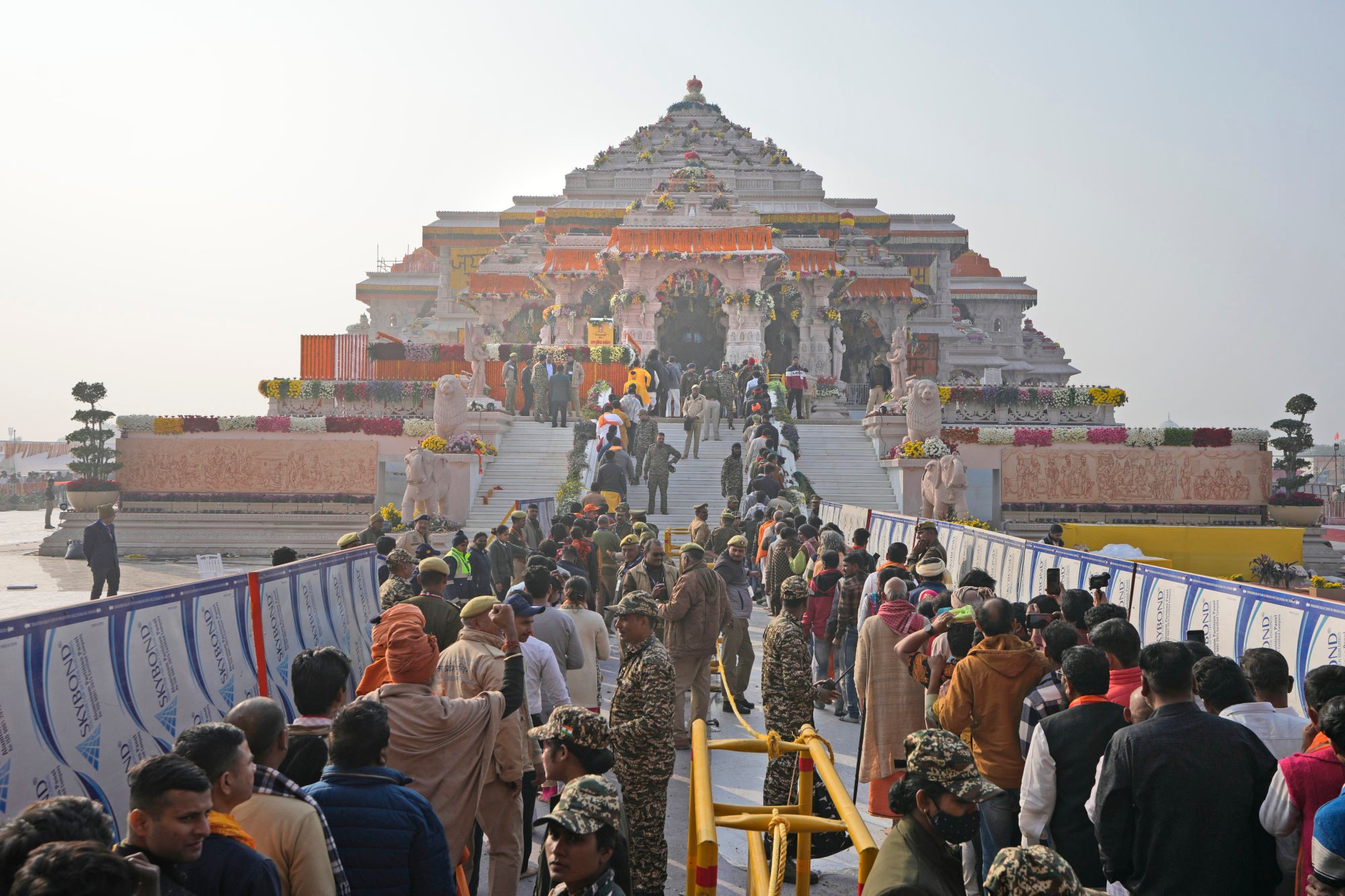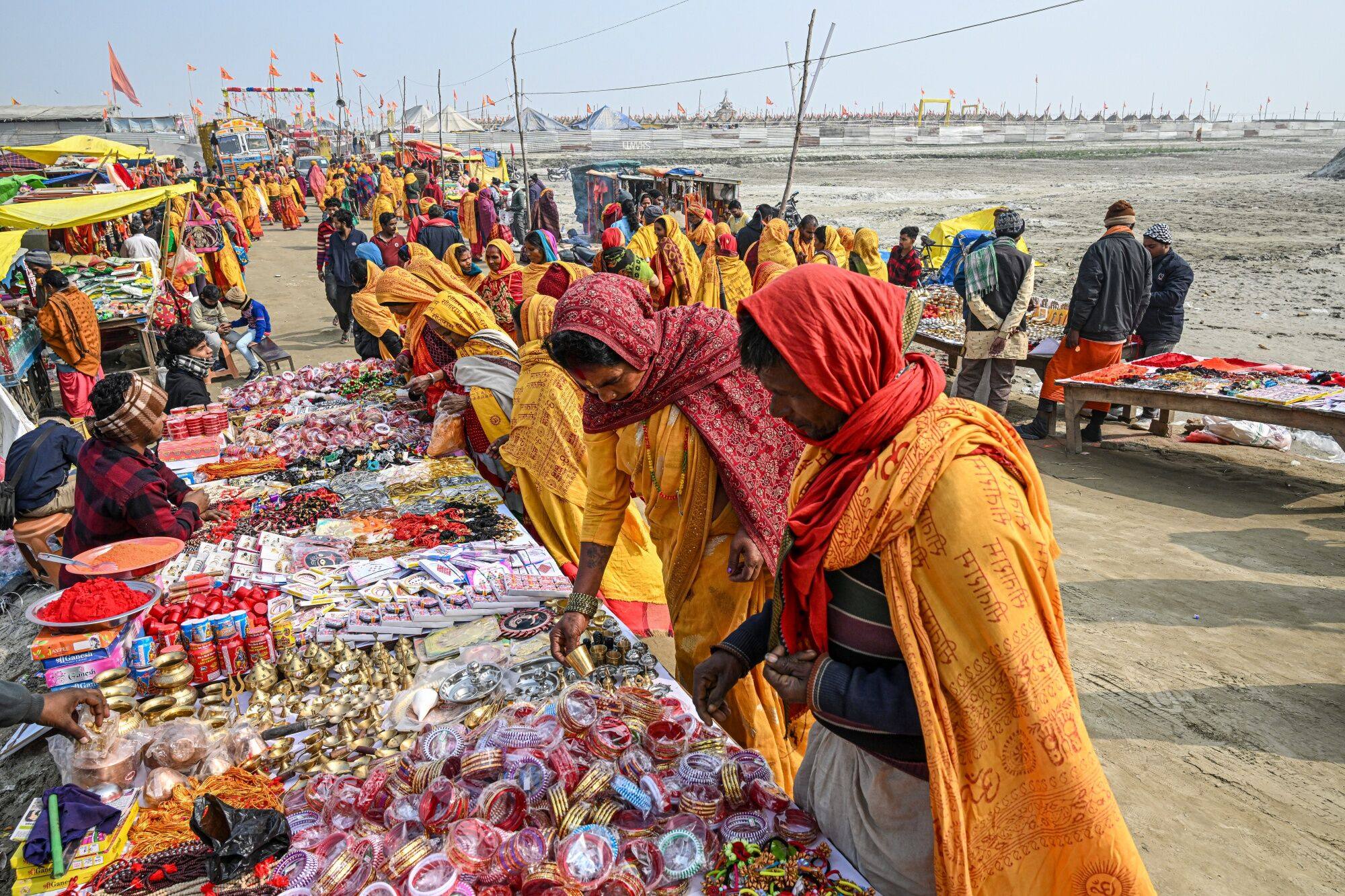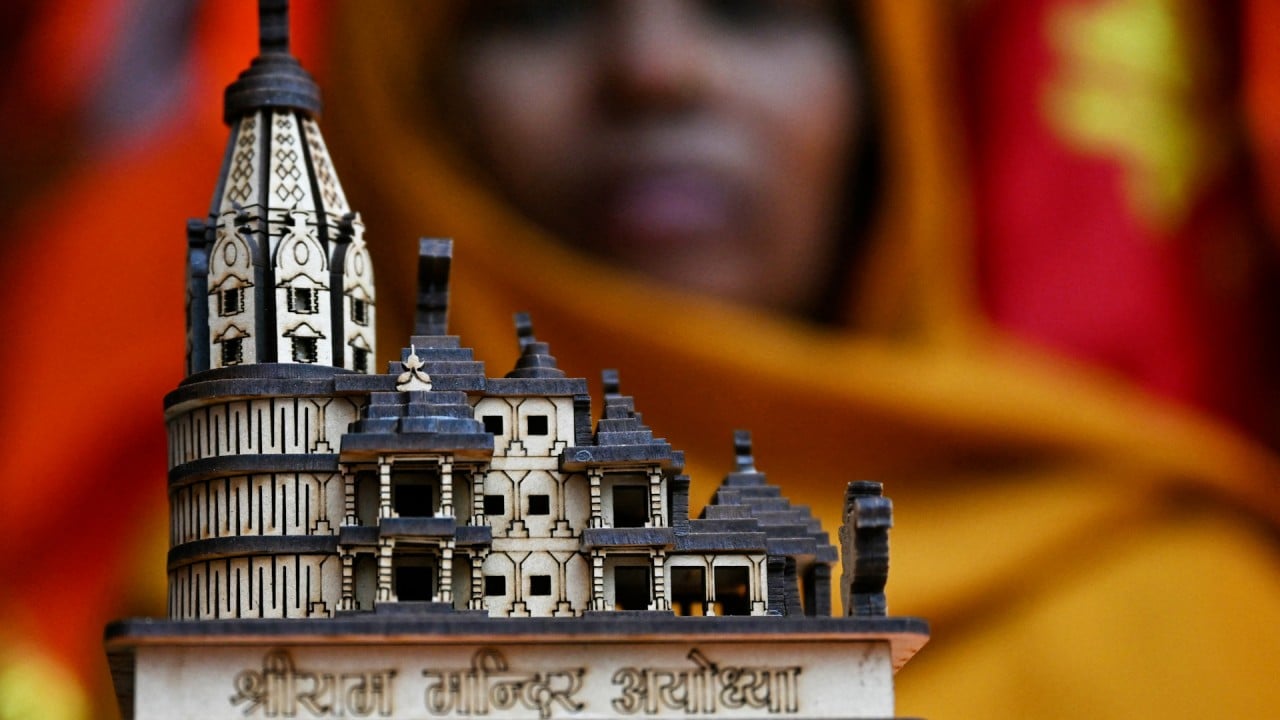“Certainly, Ayodhya is expected to witness a substantial influx of both permanent residents and transient visitors,” said Dikshu Kukreja, the architect who has been tasked with the modernisation plan of the city to cope with the expected surge.
“To address this, our focus was on establishing robust connectivity, including an international airport, world-class railway stations, and state-of-the-art bus terminals,” he added.
With a US$10 billion makeover, the city is expected to attract more than 50 million tourists annually, having a multiplier effect on hotels and other economic activity and serving as a template for infrastructure-driven tourism, says US-based investment firm Jefferies.
India has 42 Unesco World Heritage sites, several of them associated with places of worship. Religious tourism accounts for the biggest chunk of visitors in the country.
Celebrations were held on Monday across the nation by mostly Hindus after Modi’s call to treat the day like Diwali, the festival of lights, which marks Ram’s return to Ayodhya in Hindu mythology. Transactions of over 1 trillion rupees (US$12 billion) were recorded, with purchases of gift items such as temple replicas, fireworks and food, the Confederation of All India Traders said.
The religious fervour is likely to translate into longer-term business opportunities as well due to infrastructure development of pilgrimage centres, industry executives say.

Ayodhya is a 2,500-year-old town which has been dug out, and is being modernised. Narrow lanes and bylanes are being widened, multi level car parks are being built and hubs for electric vehicles being provided for sustainable transport, Kukreja said.
“Importantly, we aimed to prioritise pedestrians with wide footpaths, dedicated cycle tracks, and a reduced reliance on private vehicles. These initiatives are part of our ongoing vision plan for Ayodhya,” he said.
Rebuilding began only after an extensive study of other places of pilgrimage within the country including Tirupate, Amritsar, Ujjain and Varanasi as well as places abroad such as the Vatican City, Jerusalem, and Cambodia.
“Our study revealed that Indian temple towns often experience organic development, with local administrations struggling to keep up with essential infrastructure needs. In contrast, international religious cities have better-planned infrastructure,” Kukreja said.
India’s Hindu nationalist fervour echoed in ancient city Ayodhya’s revamp
India’s Hindu nationalist fervour echoed in ancient city Ayodhya’s revamp
That has led to a plan to establish a 1,200-acre smart township in Ayodhya with the aim to remove eyesores and unsafe things such as loose-hanging overhead wires to open drains and replacing these with hygienic places to house tourists.
“Our vision plan emphasises strategies like expanding homestays to offer a more holistic experience for tourists and create economic opportunities for the local population,” said Kukreja, adding that different accommodation including rent-free ones are in the offing.
Currently, the town has only one luxury accommodation with 80 rooms run by Sarovar group of hotels under a franchisee with Radisson Hotels.
“I am expecting 90 per cent occupancy for the next 12 months (for our hotel in Ayodhya), said Ajay Bakaya, chairman and managing director of Sarovar group of Hotels. “(But) there are at least 15 to 20 hotels under development (by different groups). In another five to six years, we will have another 2,500-3,500 rooms (in Ayodhya).”

Sarovar Hotels, which has over 100 properties, is one of the strongest players in religious tourism with properties in Amritsar in Punjab, which houses Sikhism’s revered Golden Temple, to one near Vaishno Devi temple in Jammu and Kashmir.
Under BJP’s decade-old regime, other ancient pilgrimage sites besides Ayodhya such as Varanasi and Mathura have been getting a facelift – work that is expected to get a fillip if the BJP returns to power later this year.
Deepak Jolly, an avid traveller, says he was “pleasantly surprised” when he visited Varanasi after about a decade last December.
“When our plane landed, I was surprised to see six others on the tarmac. In my previous visits, I would usually see only one. The drive from the airport to the city hotel itself took only 30 minutes, compared to one-and-half hours earlier,” he said.
Roads within the city have been widened and access between the city’s Kashi Vishwanath temple and banks of the Ganges river where prayers are offered, he said. “I now plan to travel to Ayodhya with my family once the hustle and bustle settles.”


